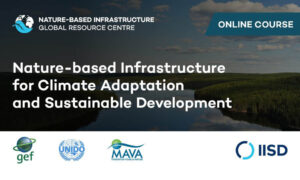Nouvelle
Sustainable Infrastructure and the Role of Geneva

Mise à jour: 12 Sep 2023
Investing in sustainable and resilient infrastructure is crucial to meeting the Sustainable Development Goals by 2030 and achieving net zero emissions by 2050. A resolution on sustainable and resilient infrastructure, adopted at the UN Environment Assembly, encourages Member States to integrate environmental considerations in all their infrastructure plans, to develop and strengthen national and regional systems-level strategic approaches to infrastructure planning, to promote nature-based solutions, and to encourage the United Nations Environment Programme to support countries in building the technical and institutional capacity to develop sustainable infrastructure.
Sustainable Infrastructure at the UN Environment Assembly
Planning, designing, constructing, operating, and decommissioning a Sustainable infrastructure system ensures economic and financial viability, social viability, environmental viability (including climate resilience), and institutional viability over the entire infrastructure life cycle. In addition to built infrastructure, sustainable infrastructure may include natural infrastructure or hybrid infrastructure.
Investing in sustainable and resilient infrastructure is crucial to meeting the Sustainable Development Goals by 2030 and achieving net zero emissions by 2050. According to the Organization for Economic Co-operation and Development (OECD), USD 6.9 trillion will be needed annually until 2050 for infrastructure investment to meet development goals and create a low carbon, climate resilient future. According to the Global Infrastructure Hub, there is still a multi-trillion-dollar gap in these investments, and most investments are made into « business as usual » infrastructure.
At the fifth session of the UN Environment Assembly (UNEA), which met in Nairobi in March 2022, Members States adopted a resolution on Sustainable and Resilient Infrastructure (UNEP/EA.5/Res.9). This new resolution builds on a 2019 UNEA resolution (UNEP/EA.4/L.5) by encouraging Member States to:
- implement the International Good Practice Principles for Sustainable Infrastructure;
- promote investment in sustainable and resilient infrastructure, natural infrastructure and nature-based solutions;
- cooperate internationally to strengthen frameworks, including for financing; and
- provide opportunities for engaging relevant stakeholders.
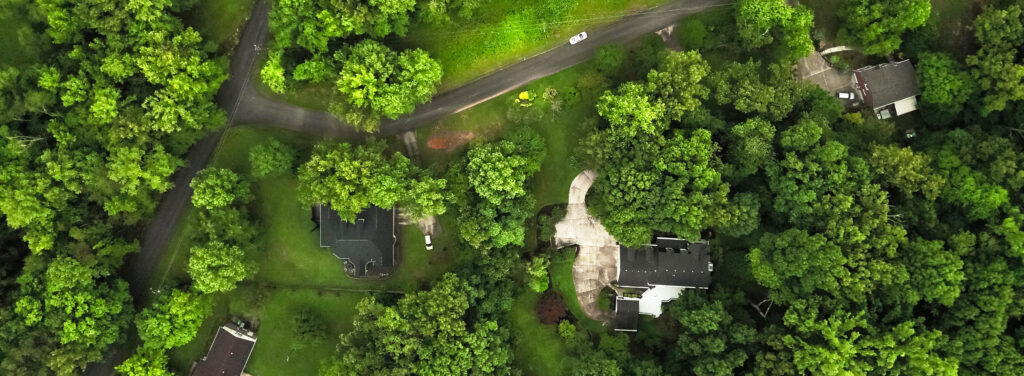 Rodney Truitt Jr, 2021 © Unsplash
Rodney Truitt Jr, 2021 © Unsplash
Agenda 2030 and Infrastructure
In 2012, the Rio+20 Conference developed the 2030 Agenda as a shared global vision. It was adopted by UN Member States in 2015 with the inclusion of the seventeen SDGs. Infrastructure – itself a cornerstone component of SDG 9: industry, innovation and infrastructure – underpins many of the SDGs.
By 2030, infrastructure and industries must be more resource-efficient and adopt clean and environmentally sound technologies. SDG 9 (Industry, Innovation and Infrastructure) seeks to support technology development, research, and innovation, as well as increase the access of small-scale industrial and other companies to financial services including affordable credit, and increase their integration into value chains and markets. Furthermore, it advocates providing universal and affordable internet access to the world’s least developed countries.
The Sustainable Infrastructure Partnership
The Sustainable Infrastructure Partnership (SIP) was launched in 2018 to promote and support integrated approaches to sustainable infrastructure planning and development. SIP recognizes the central role infrastructure plays in advancing the 2030 Agenda for Sustainable Development. SIP considers how different infrastructure systems, sectors, phases, and governance structures interact through an interdependent lens. A comprehensive approach to infrastructure development can be helpful to deliver optimal social, environmental, and economic outcomes. Read more →
Three core goals:
- Raise awareness about the centrality of infrastructure for the 2030 Agenda.
- Develop and share new and existing normative and technical guidance and tools for integrating sustainability into infrastructure planning, investment, and delivery.
- Strengthen the technical and institutional capacity of developing countries to adopt and apply integrated approaches to infrastructure development, as a means of achieving the SDGs.
Infrastructure investment is a key tool for improving productivity, stimulating economic growth, generating decent jobs, addressing inequalities and building resilience,
But infrastructure will only deliver on these objectives if sustainability is embedded at its core – increasing society’s resilience while reducing climate risk. A business-as-usual approach to infrastructure would lock in carbon-intensive, unsustainable development and would deal a fatal blow to the aim of Member States to limit warming to 1.5°C.
— UN Secretary-General António Guterres , foreward of the revised second edition of the International Good Practice Principles for Sustainable Infrastructure.
International Good Practice Principles for Integrated Approaches
Launched in 2022, the International Good Practice Principles for Sustainable Infrastructure have been developed as part of the implementation of United Nations Environment Assembly (UNEA) Resolution 4/5 on sustainable infrastructure (UNEP/EA.4/ Res.5), and are reflected in the subsequent UNEA Resolution 5/9 on sustainable and resilient infrastructure (UNEP/EA.5/Res.9).
Economies, societies, and the environment are interconnected by different types of infrastructure systems. Investing in infrastructure that contributes to the SDGs requires integrating sustainability into the earliest stages of infrastructure planning in a way that takes into account the interconnections between infrastructure systems and sectors, their locations, governance frameworks, and sustainable development throughout the entire infrastructure life cycle. The integrated, systems-level approach can increase governments’ ability to meet service needs more efficiently, pollute less, and be more resilient, more cost-effective, and less risky than « business as usual. »
By concentrating upstream of the project level and summarizing good practice for sustainable infrastructure policies, planning, preparation and delivery, the International Good Practice Principles for Sustainable Infrastructure complement existing materials. The Sustainable Development Goals require an enabling environment for sustainable infrastructure that supports their achievement.
Governments can take actions based on these principles. The public sector creates the enabling environment for sustainable infrastructure, and identifies and overcomes barriers to its implementation. Infrastructure investment will continue on an unsustainable path without proper institutions and policies. Public and private sectors can both be sponsors or investors in infrastructure development. Read more →
Guiding Principles
Following is a list of guiding principles relating to the sustainable infrastructure provided by the UNEP report.
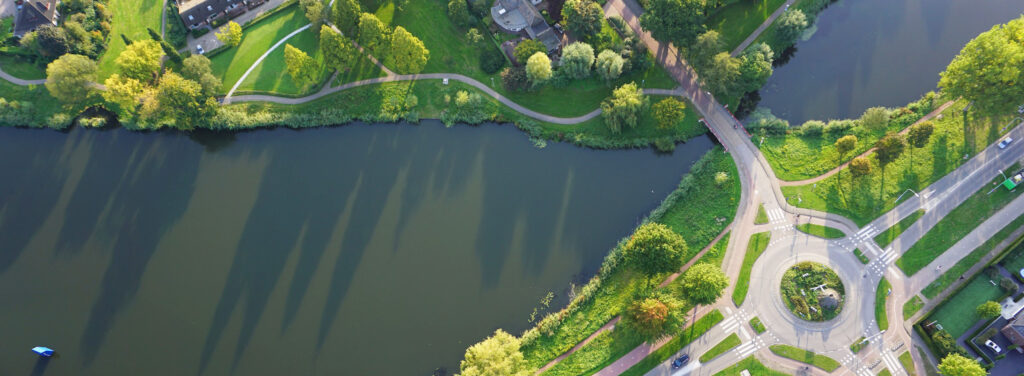 Ezra, 2018 © Unsplash
Ezra, 2018 © Unsplash
The Role of Geneva
Organizations are listed in alphabetical order.
Green Growth Knowledge Platform | GGKP
In 2018, the Sustainable Infrastructure Partnership (SIP) was launched to promote and support integrated approaches to sustainable infrastructure planning and development. SIP recognizes the centrality of infrastructure to the 2030 Agenda for Sustainable Development. This approach can help deliver optimal social, environmental, and economic outcomes of infrastructure development.
International Federation of Red Cross and Red Crescent Societies | IFRC
In addition to promoting environmentally sustainable practices in communities, IFRC offices are actively reducing their own carbon emissions. The World Disasters Report 2020 highlighted how climate change is already devastating lives and livelihoods, and they will only get worse unless immediate and determined action is taken. A review of climate disaster trends is presented in the World Disasters Report 2020, which also offers recommendations for addressing the humanitarian impacts of the climate crisis.
International Institute for Sustainable Development | IISD
IISD provides research and advisory services on infrastructure and project finance and helps policy-makers and stakeholders develop their skills in managing project and infrastructure finance.
Together with the Global Environment Facility (GEF), the MAVA Foundation, and the United Nations Industrial Development Organization (UNIDO), IISD has established the Nature-Based Infrastructure Global Resource Centre The NBI Global Resource Centre aims to bring together key partners to establish a business case for nature-based infrastructure. It provides data, training, and sector-specific valuations based on the latest innovations in systems thinking and financial modelling.
IISD and the MAVA Foundation built the Sustainable Asset Valuation (SAVi), an assessment methodology that provides policy-makers and investors with a comprehensive analysis of how much their infrastructure projects and portfolios will cost throughout their life cycles, taking into account risks that are overlooked in a traditional valuation. SAVi helps policy-makers and investors make informed decisions on financing sustainable infrastructure.
International Labour Organization | ILO
Founded on the belief that social justice is essential to achieving universal and lasting peace, ILO promotes strong social policies, justice and democratic institutions to ensure equity, social progress, and poverty eradication, whereas economic growth is indispensable but not sufficient. The ILO emphasizes the role that the World of Work can play in achieving a variety of Sustainable Development Goals. As the construction industry generates jobs for large numbers of people, ILO addresses this topic through the Sectoral Policies Department (SECTOR). ILO’s work on the construction sector addresses the increasing use of environment-friendly technologies by identifying and developing skills training for workers and managerial training for enterprises to adapt to such changes. Within the context of a just transition, ILO considers investments in sustainable and resilient infrastructure as a multiplier for green jobs’ significant potential to contribute to climate change adaptation and mitigation.
International Organization for Standardization | ISO
ISO International Standards support sustainable industrialization through internationally agreed specifications that meet quality, safety and sustainability requirements. ISO International Standards provide a platform for ensuring interoperability, which encourages investment and supports innovation. Moreover, ISO’s ongoing work on innovation management will offer tried-and-tested frameworks that help organizations unleash their innovative potential. This includes standards ISO 56002 on innovation management systems and ISO 56003 on tools and methods for collaborative innovation partnership. 14034 ISO standards are helping to meet SDG 9. Browing them is possible through ISO’s SDG search tool.
International Union for Conservation of Nature | IUCN
The International Union for Conservation of Nature (IUCN) is a global authority on the status of the natural world and the measures needed to safeguard it. Since January 2012, IUCN is a member of the research project URBES (Urban Biodiversity and Ecosystem Services) which aims to inform urban management and decision-makers on how to best integrate the natural environment and human needs.
IUCN has focused on natural infrastructure solutions since 2012, of which water is a key component, as part of The Nexus Dialogue on Water Infrastructure Solutions. The objective has been to identify how multisectoral solutions are, or could be provided through infrastructure and other means, including new technologies and investments in ecosystem services.
Partnership for Action on Green Economy | PAGE
The Partnership for Action on Green Economy represents a mechanism to coordinate UN action on green economy and to assist countries in achieving and monitoring the emerging Sustainable Development Goals, especially SDG 8: Promote sustained, inclusive and sustainable economic growth, full and productive employment and decent work for all.
As a result of UNIDO’s contribution, PAGE is supporting governments and industry in the implementation of the SDG 9 on Industry, Innovation and Infrastructure, SDG 7 on Affordable, Reliable and Modern Energy, and SDG 12 on Responsible Consumption and Production.
United Nations Conference on Trade and Development | UNCTAD
In 1964, when UNCTAD was created, the risk of ecological disaster was hardly on the international agenda. Today, at the fifteenth session of the Conference, the grave threat of climate change, and the immense challenge of biodiversity loss and environmental degradation, have become key challenges for sustainable development.
The transformation to a climate-resilient and more sustainable economy requires decoupling economic growth from environmental degradation and greenhouse gas emissions. For developing countries to achieve this, capacity-building and investment will be needed to build enabling infrastructures, develop human capital skills, and adopt environment-friendly technologies. In addition to rationalizing and phasing out inefficient fossil fuel subsidies that encourage wasteful consumption, while providing targeted support for the poorest, a sustainable energy transition must be promoted.
In the context of the SDG Pulse – UNCTAD’s annual statistical publication reporting on developments relating to the 2030 Agenda for Sustainable Development and the Sustainable Development Goals (SDGs), UNCTAD monitors and reports on the evolution of SDG 9 (Industry, innovation and infrastructure) indicators and complementary data and statistics. It provides an update on progress in the development of new concepts and methodologies for SDG indicators for which UNCTAD is a global custodian agency; and showcases how UNCTAD is supporting member States in the implementation of the 2030 Agenda.
United Nations Economic Commission for Europe | UNECE
The United Nations Economic Commission for Europe (UNECE) is working jointly with ITU to develop a definition of and a global standard for smart sustainable cities. The UNECE approach takes a city through a full cycle from city evaluation as Sustainable and Smart, to recommendations on how to move it forward in this area, to supporting the innovative financing and investments to concrete city projects. UNECE is also one of the core coordinators of the U4SSC initiative.
United Nations Environment Management Group | UN EMG
The UN Environment Management Group established a Consultative Process on Sustainable Infrastructure. The Process seeks to strengthen the coordination of UN-system support to Member States in this area of work. It is led by UNEP, and its Terms of Reference can be found here; the year two supplement is available here.
United Nations Environment Programme Resources and Markets Branch
The Sustainable Infrastructure Partnership was launched by UNEP in 2018. The Partnership offers a platform to promote and support integrated approaches to sustainable infrastructure planning and development.
The International Good Practice Principles for Sustainable Infrastructure have been developed as part of the implementation of United Nations Environment Assembly Resolution 4/5 on sustainable infrastructure (UNEP/EA.4/ Res.5) by the UN Environment Programme.
UN-Habitat Geneva Office
UN-Habitat works with partners to build inclusive, safe, resilient and sustainable cities and communities. While UN-Habitat’s headquarters are in Nairobi, Kenya, the Geneva Liaison Office manages and leads UN-Habitat’s policy dialogue, partnerships and collaborative programmes with the large number of humanitarian and development agencies and NGOs located in the international hub city of Geneva.
The rapid urbanization as well as the gradual increase in living standards have led to a demand for services and infrastructure construction. Since infrastructure is intrinsically linked to every aspect of urban life, improving infrastructure should ideally improve individual or community resilience. UN-Habitat explores the intrinsic link between infrastructure and resilience.
United Nations Office for Project Services | UNOPS
The United Nations Office for Project Services (UNOPS) action is rooted in the belief that infrastructure is more than just roads and buildings, and views infrastructure as an interconnected system that together has great potential to drive progress towards global goals. Our experts plan, design, construct, and maintain a wide range of sustainable, resilient, and inclusive infrastructure solutions for partners across the world. From enhancing transport, renewable energy, health and education infrastructure to advising governments on ways to make infrastructure more effective, UNOPS help improve the outcomes on investments in infrastructure – making a positive impact for years to come.
UNOPS offers a wide range of advisory services and technical assistance programmes to help its partners improve their ability to plan, deliver and manage infrastructure and offers a wide range of advisory services and technical assistance programmes to help our partners improve their ability to plan, deliver and manage infrastructure.
World Business Council for Sustainable Development | WBCSD
WBCSD is a global, CEO-led organization of over 200 businesses working together to accelerate the transition to a sustainable world. WBCSD offers a space for interactions between cities, businesses and citizens to engage with each other, build a common vision and develop suitable innovative solutions. In the area of urban mobility, WBCSD also develops tools, guidance, and policy recommendations to transform the transport sector. In 2015, WBCSD launched the Natural Infrastructure Business platform, which outlines the business case for investing in natural infrastructure. This platform is a first-time effort to raise business awareness, understanding and action towards increased investments in natural infrastructure solutions by providing concrete guidance and tools. To complement the work, WBCSD launched two publications on Incentives for Natural Infrastructure and Recommendations for advancing natural infrastructure incentives.
WWF
New infrastructure development is essential for meeting the food, water and energy needs of a growing global population and delivering the Sustainable Development Goals. WWF is promoting innovation for sustainable infrastructure. With 75% of the infrastructure we need by 2050 yet to be built, WWF advocates for the opportunity to develop ‘hybrid’ infrastructure that combines natural and built systems in ways that allow people and planet to thrive.
In 2020, WWF and Oliver Wyman released a report ‘Incorporating Sustainability into Infrastructure’ which examines how environmental, social, and governance (ESG) factors are being applied in the infrastructure investment process.
Zoï Environment Network
Zoï Environment Network is a non-profit environmental organization founded in 2009 and based in Geneva. As part of its work to build sustainable societies, it developed various products aimed at helping a variety of users to navigate the environmental implication of infrastructure construction and overall infrastructure sustainability. Specifically, between 2020 and 2022, Zoï Environment Network published issues briefings on Greening the China-Mongolia-Russia economic corridor and The Belt and Road Initiative and China’s Infrastructure Projects. As part of this research, Zoï Environment Network also produced interactive tools such as the Silk Road game and map.
Learning

Online Classroom: Taking Sustainable Urban Mobility to the Next Level
UN-Habitat | Online

Leadership for Sustainability Transition
University of Geneva | 26 – 30 June 2023
GEN Events

The Infrastructure Sustainability Learning Model: Building Capacity for the Next Generation of Sustainable Infrastructure
Geneva Environment Network | 12 June 2023
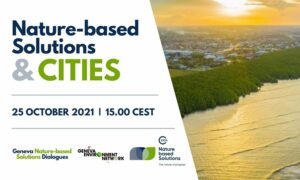
Nature-based Solutions and Cities | Geneva Nature-based Solutions Dialogues
Geneva Environment Network | 25 October 2021

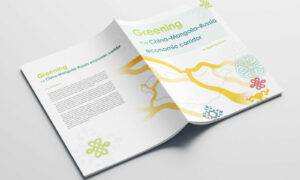
Greening the China-Mongolia-Russia economic corridor: A visual synthesis
Zoï, Geneva Environment Network | 11 October 2020

Sustainable Infrastructure | Valuing the cost of risks (Early lessons from the Sustainable Asset Valuation | SAVi)
IISD, Geneva Environment Network | 19 March 2019
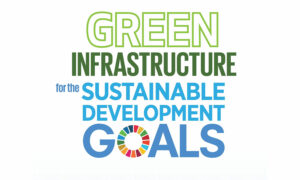
An evidenced-based approach to resilient, sustainable infrastructure | tools and experiences
UNEP, Geneva Environment Network | 15 November 2018

Infrastructure Innovations as Solutions to Environmental Challenges
UNEP, Geneva Environment Network | 5 September 2018
Resources
- International Good Practice Principles for Sustainable Infrastructure
- UN Environment Management Group (EMG) Consultative Process on Sustainable Infrastructure
- Sustainable Infrastructure Partnership
- Declaration on Fundamental Principles and Rights at Work (1998)
- Performance-Based Specifications: Exploring when they work and why
- Investing in Climate, Investing in Growth
- Protected areas and other areas important for biodiversity in relation to environmentally damaging industrial activities and infrastructure development
- UNEP Regional Consultations on Sustainable Infrastructure
- Building Materials And The Climate: Constructing A New Future | UNEP | 12 September 2023
- Addressing ecological connectivity in the development of roads, railways and canals | IUCN World Commission on Protected Areas (WCPA), IUCN World Commission on Protected Areas (WCPA), Connectivity Conservation Specialist Group, Center for Large Landscape Conservation (CLLC) | July 2023

